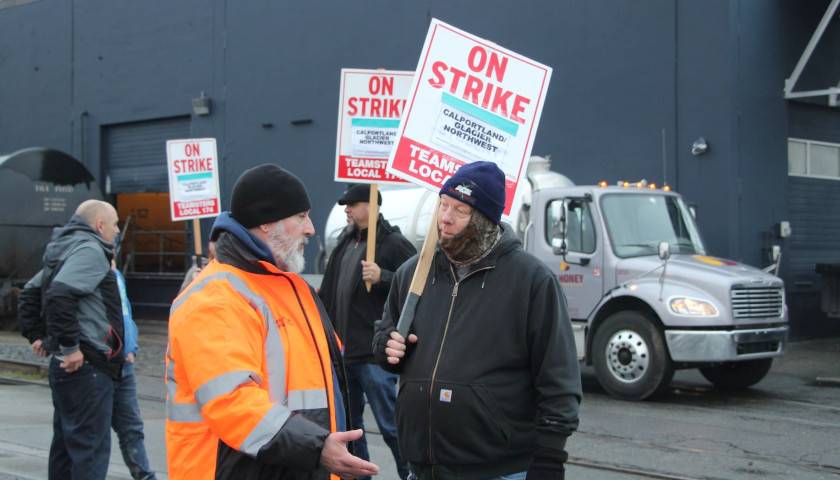by Mark Hendrickson
For years, labor unions have been exempt from the consequences of destroying private property. Would you like a higher wage or salary? Sounds good! So, how would you go about persuading your employer to give you a raise? Why not vandalize some of your employer’s property with your labor union, or at least threaten to do so unless the boss gives you the raise you want?
Let’s say you want to get hired for a certain job, but you are worried that another applicant might get the job you want. Should you slash the tires on the other person’s car and threaten to pound him with a baseball bat if he doesn’t disappear?
Hopefully, you have been startled and horrified by my ridiculous suggestions. The hypothetical acts that I described are clearly criminal, aren’t they? Well, not always.
So much for the hallowed principle of equality before the law. It brings to mind Thomas Jefferson’s statement that “[i]t is strangely absurd to suppose that a million [or any smaller number] of human beings, collected together, are not under the same moral laws which bind each of them separately.” What is a crime for an individual has been regarded in American law as an acceptable bargaining tactic for labor unions.
Supreme Court Rules Against Labor Unions
The good news is that the Supreme Court recently rendered a decision that attempts to correct this abominable legal anomaly. On June 1, the court, voting 8–1, ruled in Glacier Northwest Inc. v. International Brotherhood of Teamsters Local No. 174 that labor law does not give striking workers the right to sabotage and destroy the property of their employers.
Here is a thumbnail sketch of the case: A Teamsters Union local staged a sudden work stoppage at the cement company that employed it. Union workers loaded all the cement mixers on the premises with cement, turned on the tumblers, and walked out. This forced management to scramble frantically to keep the concrete from being ruined and the cement mixers from being badly damaged, either of which would have been costly losses.
In response to the sabotage, the company sued the union for attempted destruction of property. The union asserted that the 1935 National Labor Relations Act (NLRA) protected their actions. The NLRA established the National Labor Relations Board, a presidentially appointed committee that essentially bypasses regular courts and laws and has special jurisdiction over labor-union affairs. The Washington state Supreme Court ruled in favor of the union. Subsequently, the Supreme Court overturned the Washington court.
The notion that labor unions should be permitted to engage in vandalism or violence against employers’ property (and even against other workers) is an uncomfortable vestige of our country’s violent history of clashes between employees and employers. That notion is anachronistic today. It is a holdover from an earlier era in which wages were held back by a shortage of capitalists/employers and in which people held the ignorant Marxian belief that capital and labor are irreconcilable enemies rather than natural allies.
It is time for American law to uphold the principle that violence or threats of violence are just as impermissible for labor unions as they are for anyone else. In Glacier Northwest, the Supreme Court has taken a significant step out of the dark ages and into the 21st century. Let us hope that Congress continues this much-needed modernization by repealing the anomalous and outdated National Labor Relations Act.
– – –
Mark Hendrickson is an economist who retired from the faculty of Grove City College in Pennsylvania, where he remains a fellow for economic and social policy at the Institute for Faith and Freedom. He is the author of several books on topics as varied as American economic history, anonymous characters in the Bible, the wealth inequality issue, and climate change.
Photo “Teamsters Local 174 Members on Strike” by Teamsters Local 174.




